The week at a glance
- Baikal Teal at Flamborough Head
- Red-flanked Bluetail in Norfolk
- Unringed, untagged Great Bustard reported in Suffolk
- Baillon's Crake found freshly dead in Gloucestershire
- Pallid Swift on Scilly
- Harlequin still on North Uist and Pied-billed Grebe still in Somerset
- Negative news on the Galway American Coot
- Small arrival of spring overshoots including Hoopoes and Alpine Swifts
It was fair to say that spring finally arrived this week. Conditions were very much seasonable: changeable, with strong southwesterly winds and April showers interspersed with bouts of warm sunshine (temperatures reached 22°C in the southeast on Sunday). And with the warmer weather came the long-awaited cascade of migrants: many species scarce at the beginning of the week were widespread by the end (at least in the southern half of the country), and there was some excellent inland movement to boot.
For example, London enjoyed what some described as the most productive local patching in recent memory on 15th — Wanstead Flats claimed ten Redstarts, 20+ Wheatears, a Ring Ouzel and a Whinchat among migrants, with plenty of other sites also registering multiple counts of Redstarts. This was a picture reflected across much of the English Midlands as a flood of birds, delayed by the poor conditions of recent weeks, made their way northwards across the country. Whether this form converts to a rush of exciting overshoots in time for the weekend remains to be seen — let's just be thankful that the Rock Thrush we predicted last week turned up in the Netherlands, for it isn't half an odd-looking beast, appearing to have some Blue Rock genes thrown into the mix! What a crazy bird.
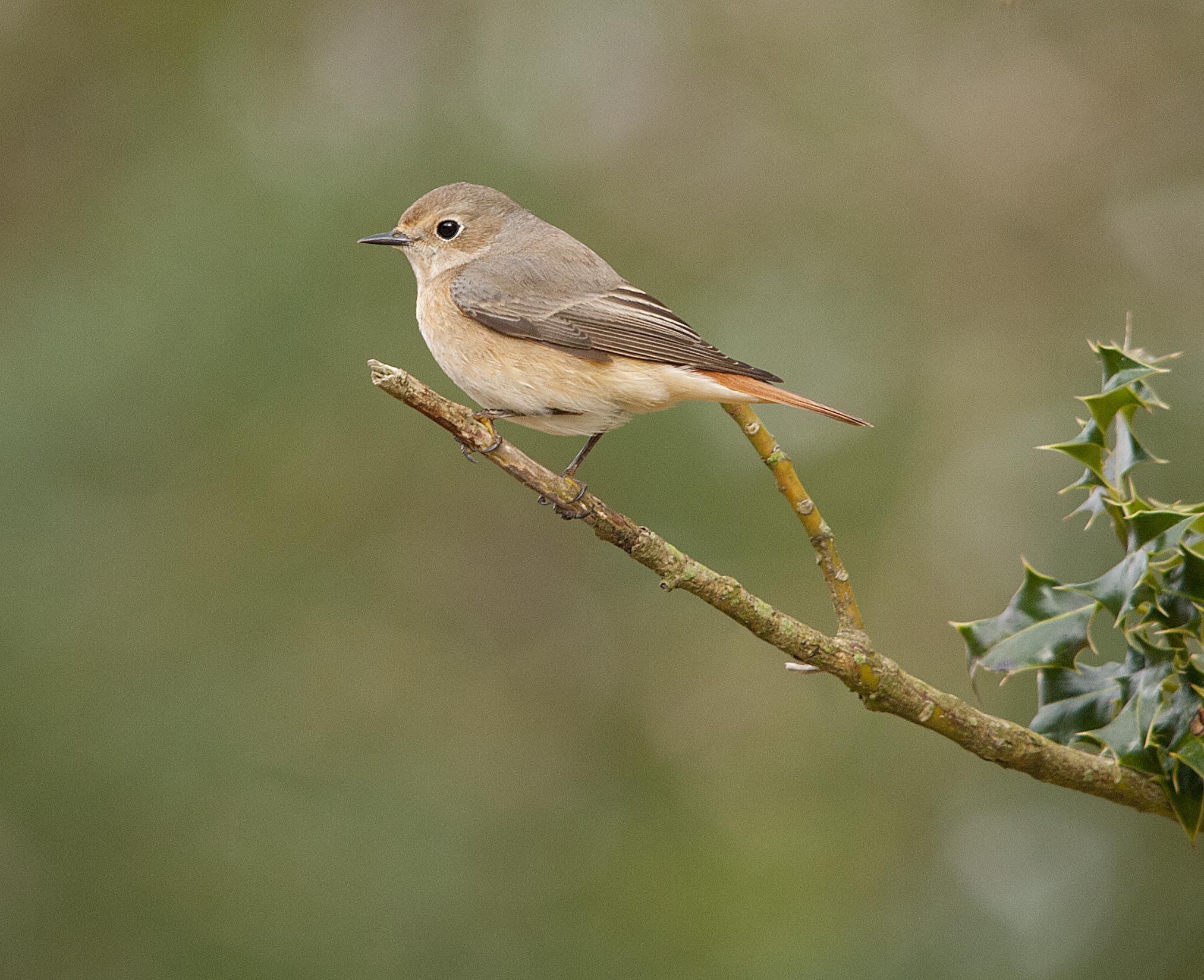
Redstart, undisclosed site, Hampshire (Photo: Steve Farmer)
The week's big excitement came from Flamborough Head (E Yorks) in the form of a drake Baikal Teal. First picked up flying in off the sea during the morning of 15th, the bird went on to spend the rest of the day on North Cliff Marsh (apart from briefly relocating to the Old Fall Flash) where it showed to a steady procession of admirers right up until dusk. Despite strong winds overnight, the bird could not be relocated the following morning and the brevity of its stay will be viewed by many as a big plus for its credibility. That said, the distinct damage to the secondaries (and one or two inner primaries) on the bird's right wing could easily be interpreted as damning evidence of a dark history.

Baikal Teal, Flamborough Head, East Yorkshire (Photo: Dave Mansell)

Baikal Teal, Flamborough Head, East Yorkshire (Photo: Steve Race)
Assessing Asian wildfowl is a difficult task for the rarities committees: Baikal Teal (along with Falcated and Marbled Ducks) are all extremely popular in collections, yet also have a high potential to make it to Northwest Europe as vagrants. The credentials of the Flamborough teal are debatable, and the wing damage could perhaps be the nail in the coffin. But, with Baikal Teal already on Category A of the British list, the Flamborough individual will no doubt enjoy an easier ride towards acceptance than a Falcated Duck (not yet on Category A) would have done in the same position. The phenomenal distances that wildfowl can cover (take a look at ringing recoveries!) is routinely underestimated. In an age where just about any respectable Hooded Merganser can wriggle its way to acceptance, it surely makes sense that the occurrence of East Asian wildfowl species in Britain and Ireland should be treated seriously if credentials (time of year and carrier species as well as condition and lack of 'bling' the most important!) are favourable.

Baikal Teal, Flamborough Head, East Yorkshire (Photo: Steve Race)
A little less controversial were our remaining headline acts: the Harlequin remained on North Uist to at least 15th and the Pied-billed Grebe in Somerset was still present and singing at Ham Wall throughout the week. County Galway's American Coot was still at Ballyconneely on 13th but has not been since and is presumed to have departed. Though discovered in unfortunate circumstances, a Baillon's Crake found dead at Slimbridge (Glos) on 17th gives hope that 2012's influx was perhaps not a one-off. And, a little excitement has already been provided this morning (18th), with a report of a Great Bustard seen near Long Melford (Suffolk) during the evening of 17th — the bird, reported by a local farmer, has apparently been photographed and does not possess any obvious wing tags or rings!
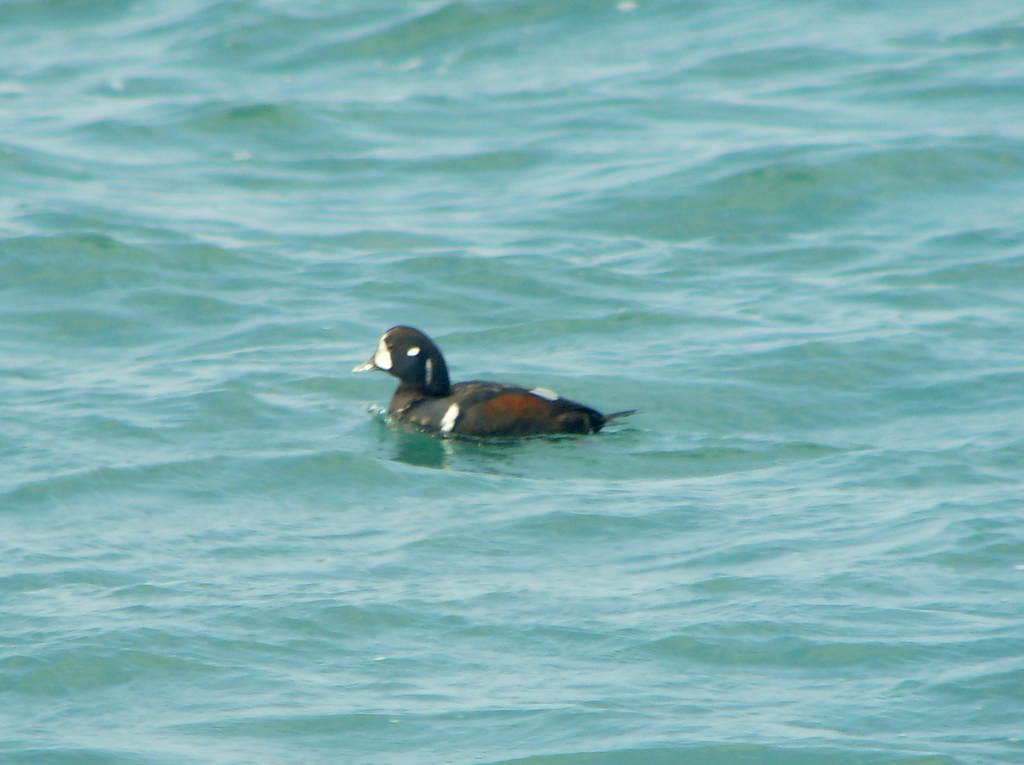
Harlequin Duck, Balranald RSPB, N.Uist, Outer Hebrides (Photo: John Nadin)
Sunday's warm conditions produced another of the week's highlights when a female-type Red-flanked Bluetail was unearthed in the dunes at Horsey (Norfolk). The bird went on to show well for the rest of the day but had seemingly moved on by the next morning, and follows hot on the heels of last week's report of a male round the Norfolk coast at Burnham Overy Dunes. If recent trends are anything to go by, it seems spring records are almost to be expected these days.

Red-flanked Bluetail, Horsey, Norfolk (Photo: Gary Thoburn)
Other notable arrivals included a Pallid Swift touring St. Mary's (Scilly) on 16th–17th, with several Alpine Swifts also seen. Three birds arrived on 14th, being seen over Skinningrove (Cleveland), Pagham Harbour (W Sussex) and Marton Mere (Lancs) though only the latter lingered long enough to be twitched. In southerly gales on 16th, a series of records along the Yorkshire coast between Bridlington and Scarborough presumably related to the same mobile individual, which was then seen at Scarborough and later Filey on 17th. Three further individuals turned up during the evening of 17th: a lucky Cliftonville (Kent) birder added the species to his garden list, a Northern Irish bird was at Castlerock (L'derry) and there was an excellent inland record at Lopham Fen on the Norfolk/Suffolk border.

Alpine Swift, Filey, North Yorkshire (Photo: Mark Pearson)

Alpine Swift, Cliftonville, Kent (Photo: Barry Hunt)

Pallid Swift, St. Mary's, Isles of Scilly (Photo: Robin Mawer)
The year's first Woodchat Shrike was in the Kenidjack valley (Cornwall) on 15th, with a Red-rumped Swallow at Crediton (Devon) on 16th and a Bluethroat reported singing at Hopton (Norfolk) that day. Eight Hoopoes were recorded: one was at The Naze (Essex) briefly on 11th and popular birds were at Middleton, Gower (Glamorgan) on 13th–16th and Westhay (Somerset) on 14th–16th. Birds at Tyttenhanger Gravel Pits (Herts), Rustington (W Sussex) and near Lamorna (Cornwall) coincided with the aforementioned push of migrants on 15th, further individuals being seen at Dunmore East (Waterford) on 16th–17th and Aberystwyth (Ceredigion) on 17th. A Wryneck was photographed in a garden in Tytherington (Glos) on 16th–17th and another was reported in Norwich (Norfolk) on 15th; Serins involved a male briefly at Dungeness (Kent) on 13th and over Happisburgh (Norfolk) on 15th. In East Sussex, a Corncrake showed very well at Beachy Head on 17th.

Hoopoe, Middleton, Gower, Glamorgan (Photo: Mark Hipkin)

Corncrake, Beachy Head, East Sussex (Photo: Jake Gearty)
Lingering winterers included the Pallas's Warbler still singing merrily on the Hampshire/Berkshire border throughout the week and the Rose-coloured Starling still clinging on in Exminster (Devon). The singing male Little Bunting continued to perform remarkably well near New Lambton (Durham) throughout, with a second bird reported briefly at Hengistbury Head (Dorset) on 17th. Though a clear exodus did appear to occur this week, Waxwings are still prominent around the country: there were 218 reports on Bird News Extra during the week. Three Shorelarks were at Ynyslas (Ceredigion) on 13th–15th and another over Boulby (Cleveland) on 16th. Nine Great Grey Shrikes reported included new birds at Newport-on-Tay (Fife), and Bagilt and Sealand (Clwyd), with two still at Wyke Down (Dorset).

Little Bunting, New Lambton, Durham (Photo: David Brown)

Little Bunting, New Lambton, Durham (Photo: D Johnson)

Great Grey Shrike, Thursley Common, Surrey (Photo: Gary Loader)
The first Purple Heron of 2013 was at Winterton Dunes (Norfolk) on 16th. A number of Great White Egrets included at least three still at Dungeness (Kent) and new birds near Bridlington (E Yorks) on 12th and Yarmouth (IoW) from 15th. What is presumably the County Donegal Cattle Egret was again at Hillsborough Lake (Down) on 16th; this is the first time it has been seen at this location since March 2012. The West Sussex Glossy Ibis reappeared near Warningcamp (W Sussex) from 14th and the Marloes (Pembrokeshire) bird was also still around. White Stork records involved what was perhaps the same wandering individual seen over three Cornish locations: Falmouth and Liskeard on 14th and Kit Hill Country Park on 16th. Others were over Upper Caldecote (Beds) on 14th, at Beal (Northumberland) on 16th and again at Breydon Water (Norfolk) on 17th.

Great White Egret, Bridlington, East Yorkshire (Photo: Tony Dixon)
Black Kites were over Bramfield and Stowmarket (both Suffolk) on 11th and 13th respectively, with a probable reported over Grayrigg (Cumbria) on 14th. In County Wexford, one of the Northern Harriers was noted at Ring Marsh on 13th, while the first Montagu's Harrier of the year — a male — flew over Ongar Park Wood (Essex) on 14th and was closely followed by two Dorset records on 15th and 16th. The juvenile White-tailed Eagle was still at Benacre (Suffolk) during the morning of 11th; it or another in the county was reported over Thorndon on 17th.
Shorebird records included the Long-billed Dowitcher again reappearing at Alkborough Flats (Lincs) on 17th, with the Gann Estuary (Pembrokeshire) bird still there on 14th and the Lesser Yellowlegs at Ernesettle (Devon) still on 16th. A handful of Dotterel records included up to two on Pendle Hill (Lancs) and another in the same county at Cockersand Abbey on 16th; others were on North Ronaldsay (Orkney) and the Great Orme (Conwy), with another flying through Ogston Reservoir (Derbys) on 17th. The Bonaparte's Gull was again on the Ogmore Estuary (Glamorgan) on 14th–17th. Just seven Ring-billed Gulls included a new second-summer at Chew Valley Lake (Somerset) on 12th–13th.
Lingering wildfowl were represented by the Red-breasted Goose remaining in Dumfries & Galloway and the Richardson's Canada Goose on North Uist relocating to Solas on 14th. The probable first-winter Black Brant was again at Rampside (Cumbria) on 12th, with others at Blennerville (Kerry) on 13th and still at Kilnsea (E Yorks) to 15th. Seven Lesser Scaup remained, all drakes save a new female at Borwick Waters (Lancs) on 14th–15th and 17th. A Ferruginous Duck was found at Minsmere (Suffolk) on 17th and a dozen Ring-necked Ducks included new drakes at Foremark Reservoir (Derbys) on 12th, Conningbrook Gravel Pits (Kent) from 14th and Loch Kinardochy (Perth/Kinross) on 16th–17th in addition to the three still on Tresco (Scilly).

Red-breasted Goose, Dumfries & Galloway (Photo: Brian Henderson).
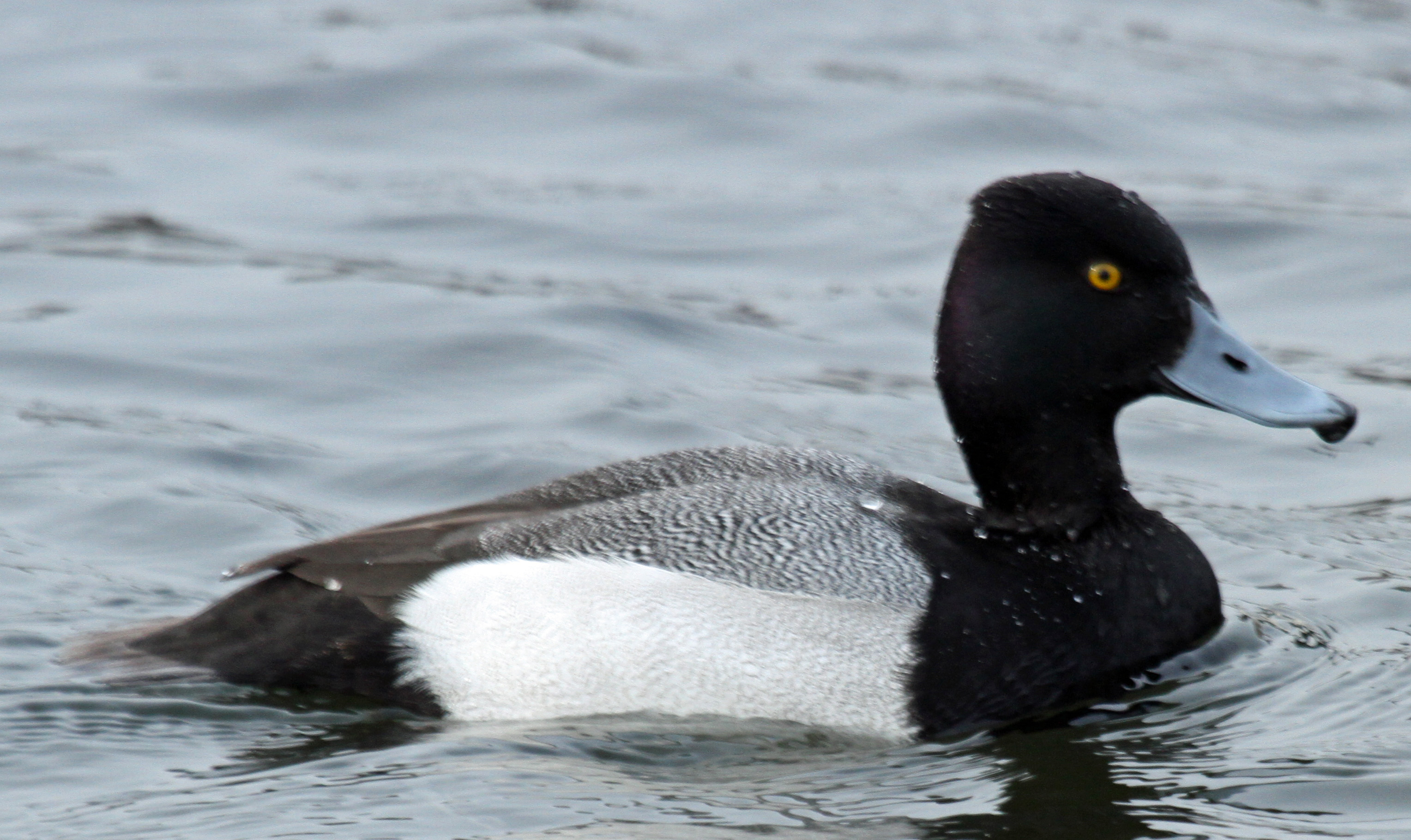
Lesser Scaup, Bryn Bach CP, Gwent (Photo: Mark Leitch)

Ring-necked Duck, Conningbrook Gravel Pits, Kent (Photo: Brian Anderson)
Just one American Wigeon remained — the drake on the Exe Estuary (Devon) to 13th — though a reasonable nine Green-winged Teal included new birds at Cross Ness (London) from 12th, Kirkby-on-Bain Pits (Lincs) from 14th and a one-dayer at North Warren (Suffolk) the same day. A drake Surf Scoter was again off Rerwick Head (Orkney) on 13th; the drake King Eider reappeared on the Ythan Estuary (Aberdeenshire) on 12th, only to relocate to Blackdog later that day. Finally, an impressive seven White-billed Divers were noted between Ports Nis and Skigersta on the northeast Lewis coastline on 12th; two were off Little Gruinard (Highland) on 13th after one there on 11th, a singleton was off Poolewe (Highland) on 15th and the South Ronaldsay bird was still there on 13th.

Surf Scoter, Rerwick Head, Mainland, Orkney (Photo: Ian Cunningham)
Photo of the Week

Little Owl, Whetstone, Leicestershire and Rutland (Photo: Paul Riddle)
BirdGuides regulars will be very familiar with Paul Riddle's work with Little Owls, through which he has now located an incredible 230 local territories. With an ambition to photograph the pairs at each of these territories, it's not surprising that Paul has the most extensive and varied collection of Little Owl photos imaginable. The entries in Paul's blog show just how dedicated he is to the owls around his Leicestershire patch. This week, a shot of one of 'his' owls poking its head out of a hole proved particularly popular with our members. The colours and textures of the tree provide a natural frame for the bird and the central placement of the bird in a square crop is the perfect composition. Strong eye contact provides viewer engagement and the wet setting allows us to imagine the owl wondering whether to bother venturing out of its cosy retreat. An image with great all-round appeal.

Hawfinch, undisclosed site, Gloucestershire (Photo: Bob Jones)

Whinchat, Malta (Photo: Natalino Fenech)

Black-necked Grebe, Woolhampton GPs, Berkshire (Photo: Jerry O'Brien)

Dotterel, Great Orme, Conwy (Photo: Mike Nesbitt)

Kestrel, undisclosed site, Lancashire (Photo: Austin Thomas)

Little Egret, Slimbridge WWT, Gloucestershire (Photo: Norman West)
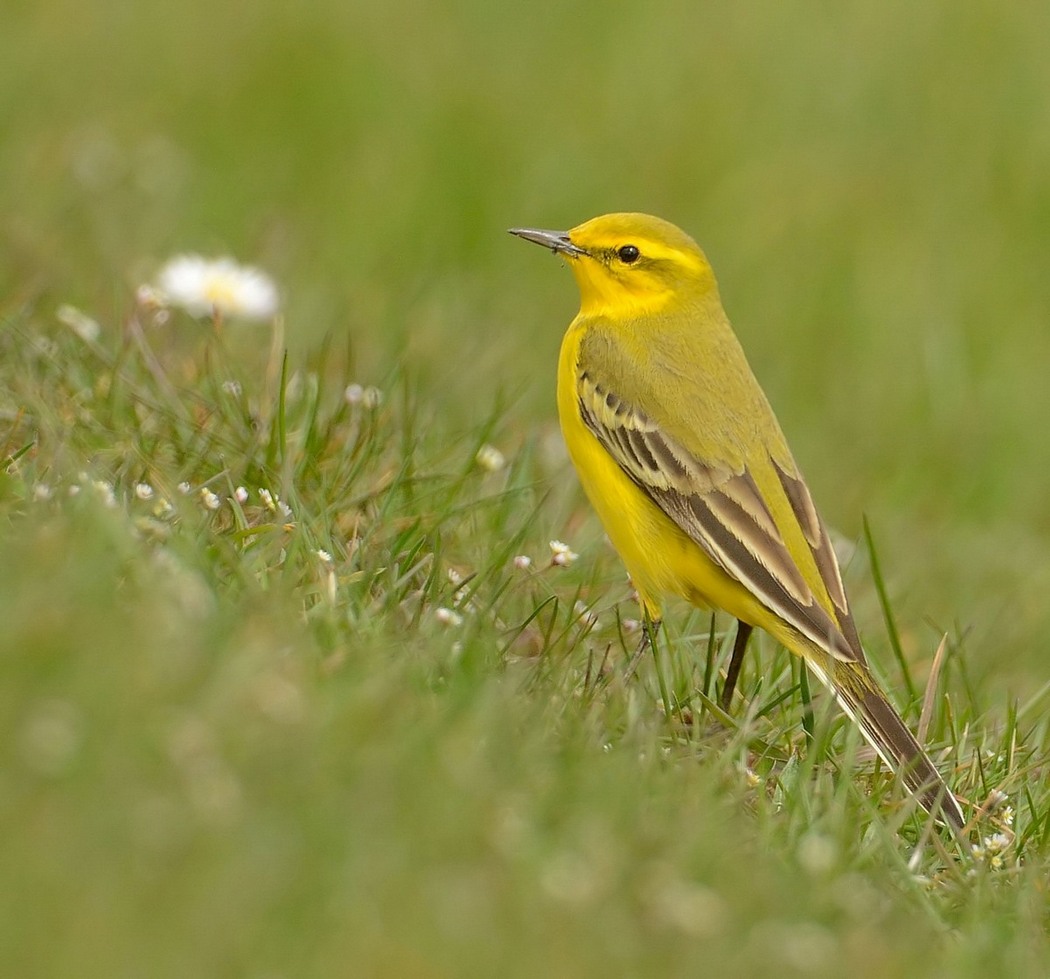
Yellow Wagtail, Farmoor Reservoir, Oxfordshire (Photo: Dave Perrett)
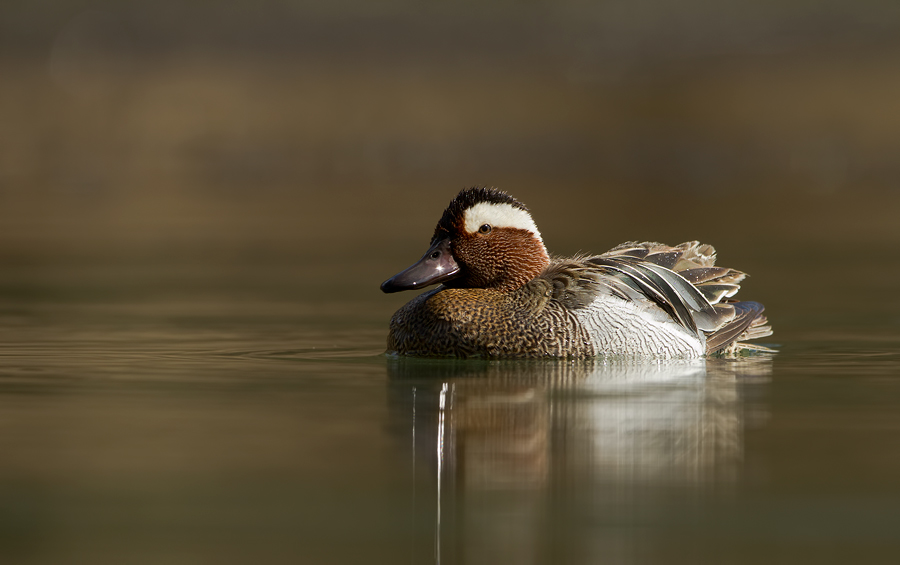
Garganey, Cannop Ponds, Gloucestershire (Photo: Carl Day)

Dipper, undisclosed site, Lancashire (Photo: Martin Jump)
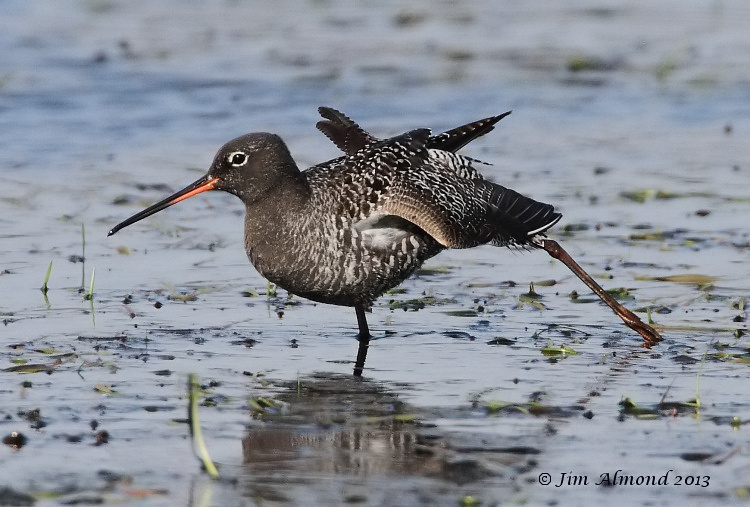
Spotted Redshank, Whixall Moss, Shropshire (Photo: Jim Almond)

Chaffinch, undisclosed site, Powys (Photo: Tom Melton)

Rüppell's Vulture, Tanzania (Photo: Darran Rickards)
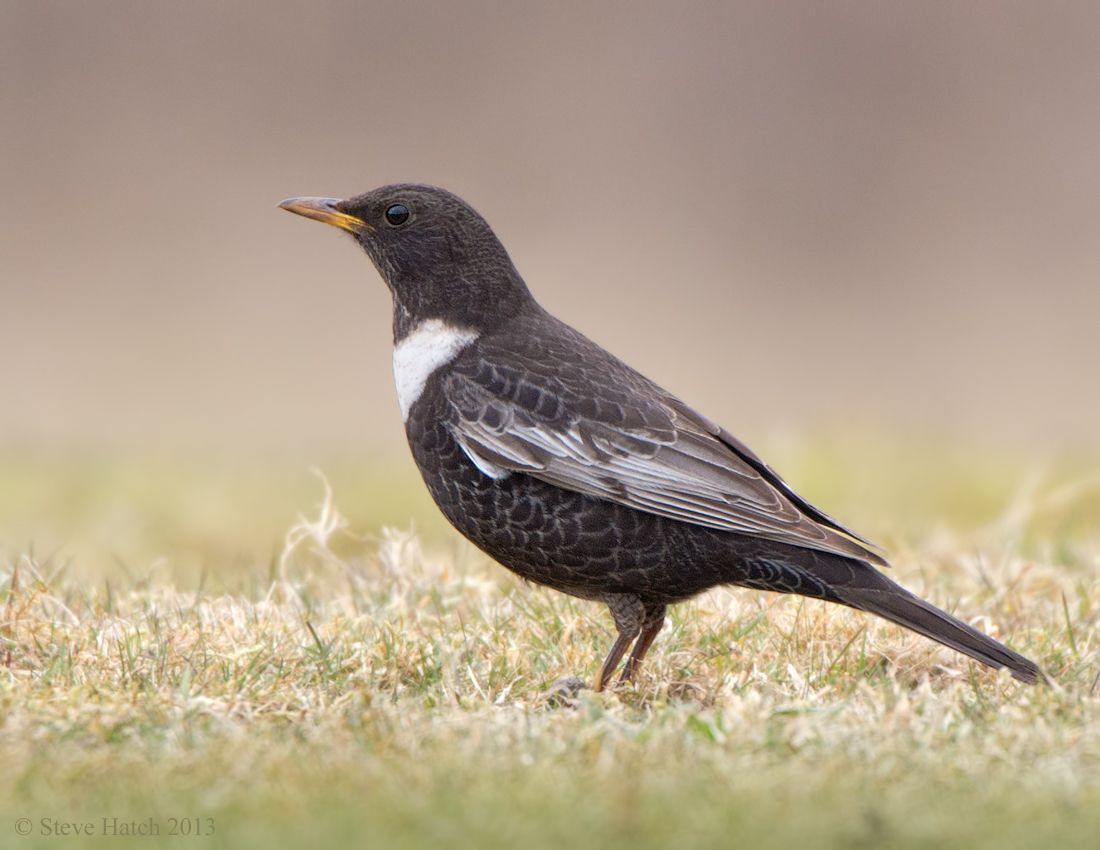
Ring Ouzel, Bystock Ponds NR, Devon (Photo: Steve Hatch)

Black Redstart, Southwold, Suffolk (Photo: Jon Evans)

Ringed Plover, Landguard NR, Suffolk (Photo: Chris Upson)

Red-flanked Bluetail, Horsey, Norfolk (Photo: Graham Clarke)


